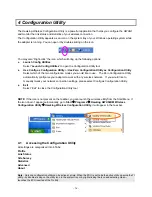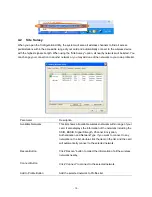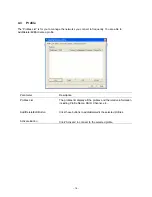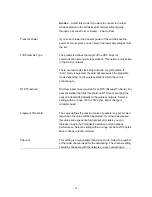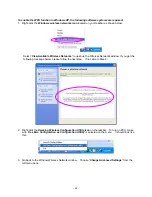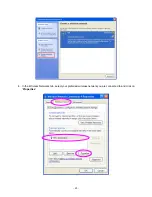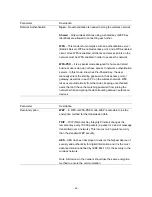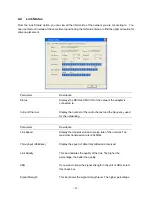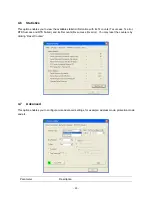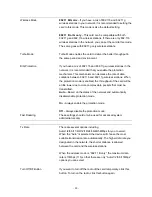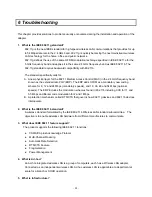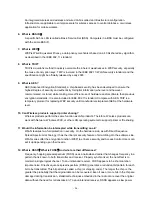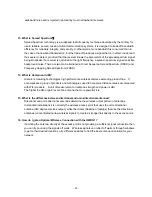
- 26 -
Parameter Description
Network Authentication
Open
–No authentication is needed among the wireless network.
Shared
– Only wireless stations using a shared key (WEP Key
identified) are allowed to connecting each other.
WPA
– This mode is for enterprise with an authentication server
(Radius Server), WPA-enabled access point, and a WPA-enabled
client. Once WPA is enabled, all clients and access points on the
network must be WPA-enabled in order to access the network.
WPA-PSK
– It is a special mode designed for home and small
business users who do not have access to network authentication
servers. In this mode, known as Pre-Shared Key, the user
manually enters the starting password in their access point or
gateway, as well as in each PC on the wireless network. WPA
takes over automatically from that point, keeping unauthorized
users that don't have the matching password from joining the
network, while encrypting the data traveling between authorized
devices.
Parameter Description
Data Encryption
WEP
– In WPA or WPA-PSK mode, WEP is also able to be the
encryption method for the transmission data.
TKIP
– TKIP (Temporal Key Integrity Protocol) changes the
temporal key every 10,000 packets (a packet is a kind of message
transmitted over a network.) This insures much greater security
than the standard WEP security.
AES
– AES has been developed to ensure the highest degree of
security and authenticity for digital information and it is the most
advanced solution defined by IEEE 802.11i for the security in the
wireless network.
Note: All devices in the network should use the same encryption
method to ensure the communication.
Summary of Contents for HWUG1
Page 1: ......
Page 15: ... 12 3 After selecting the component you need click Add to install ...
Page 28: ... 25 ...



